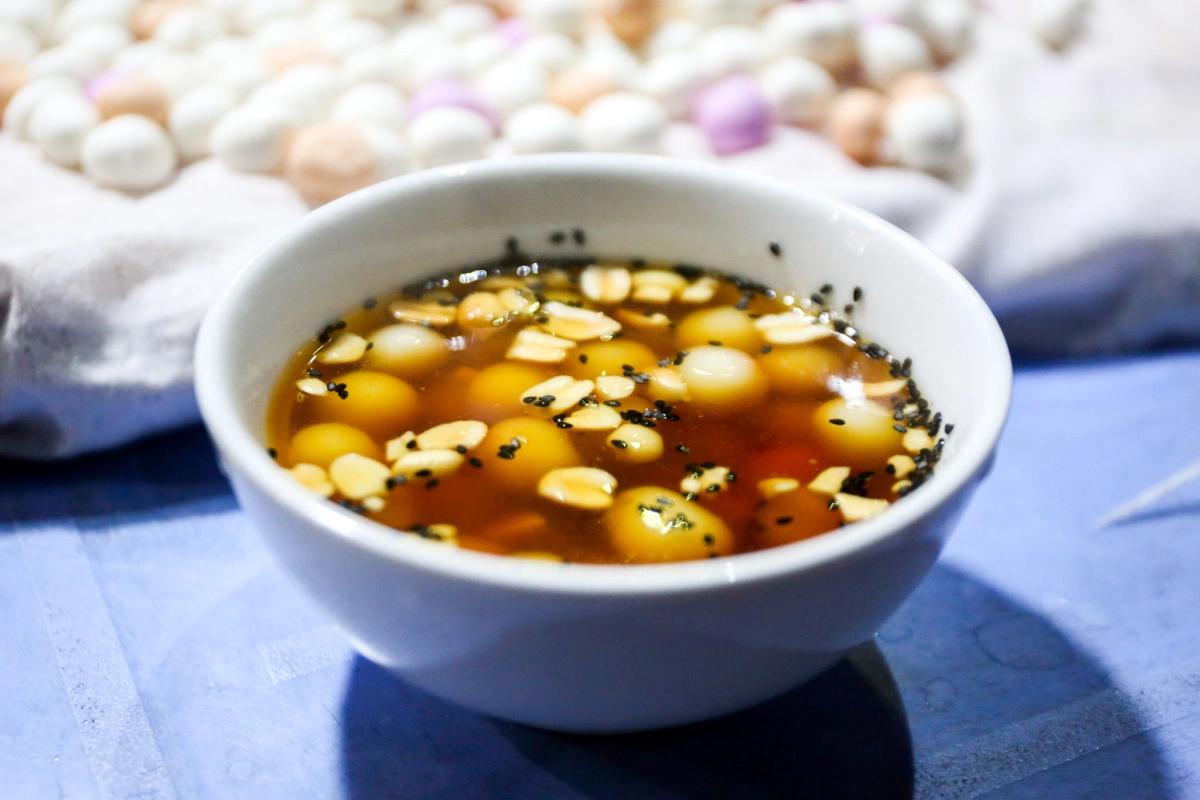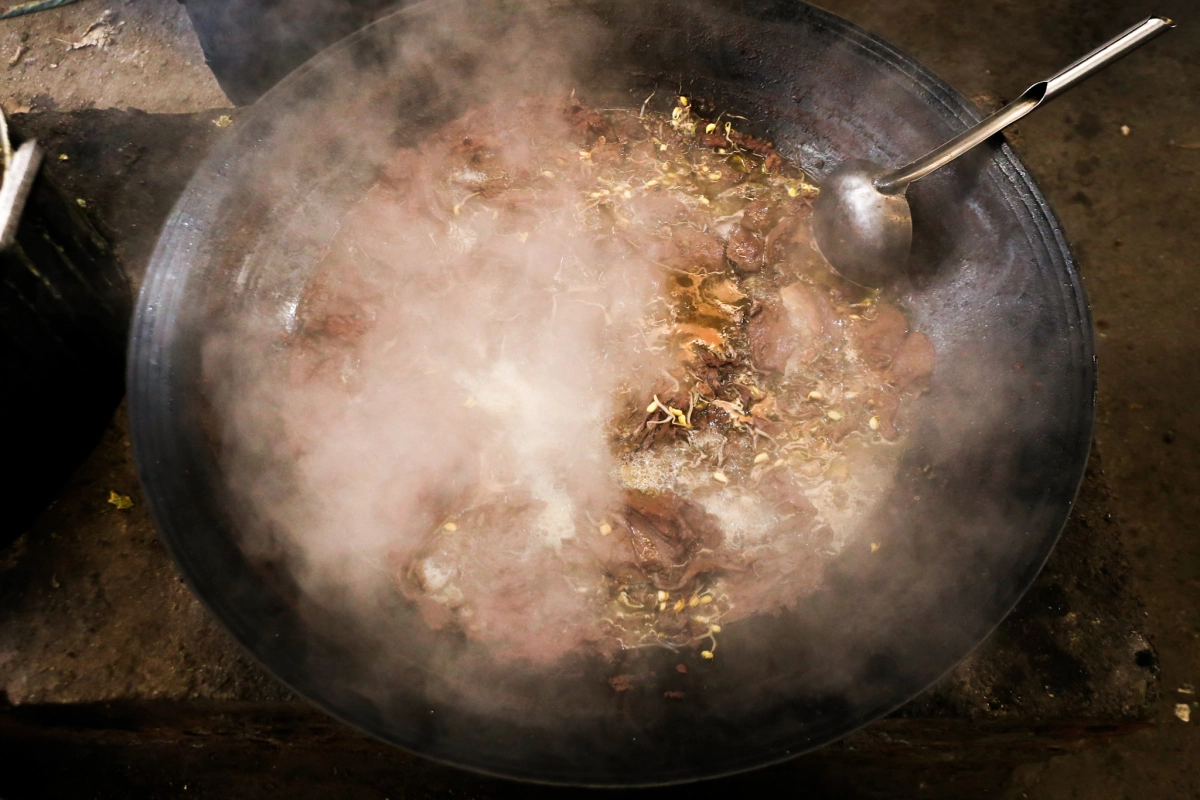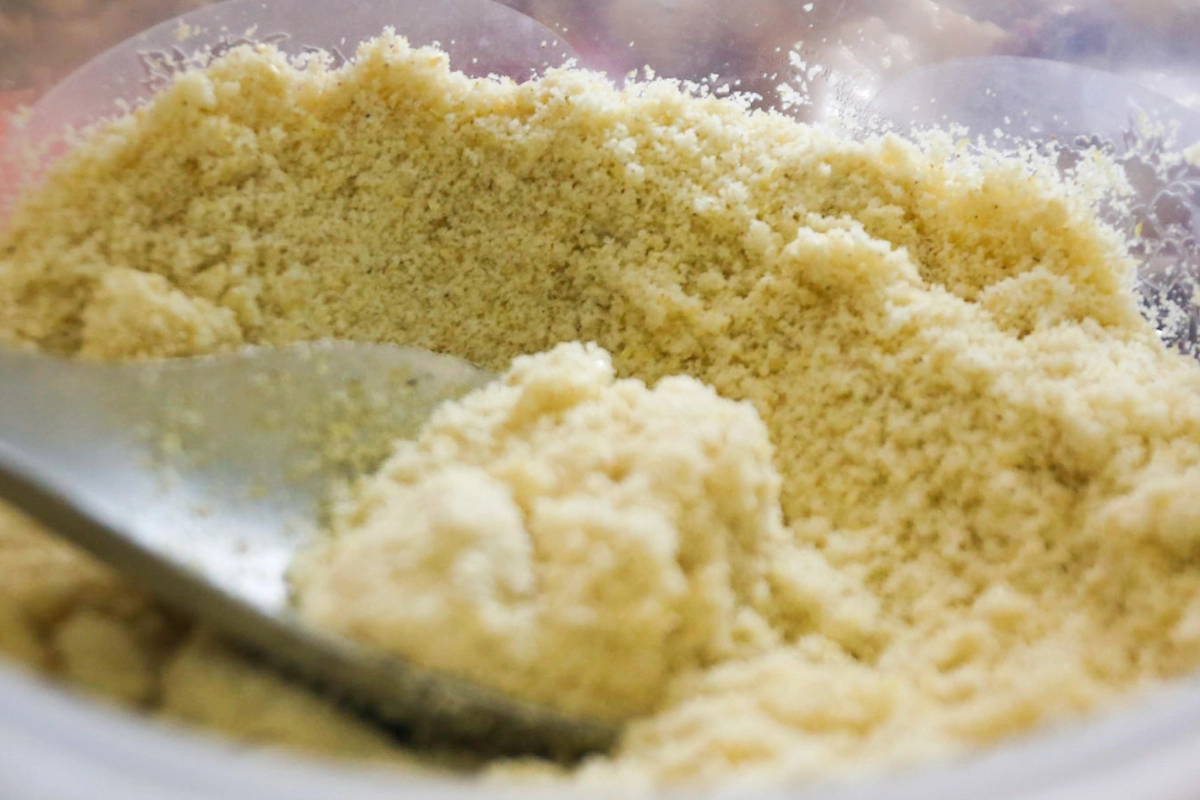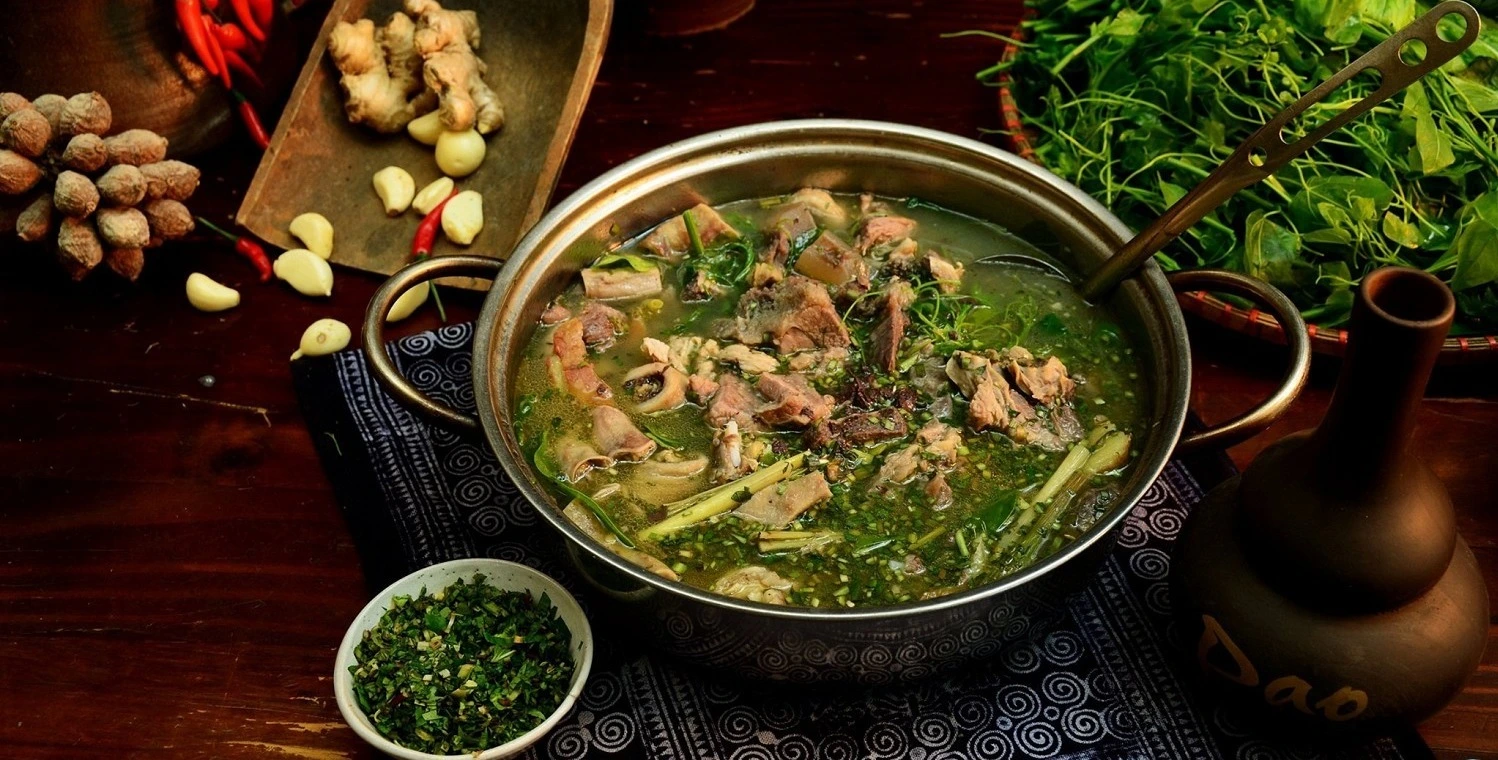Buckwheat Pancakes
Named after a typical flower of Ha Giang, buckwheat cake makes many people curious. The cake is made from buckwheat flower seeds with high nutritional value. Buckwheat grains are pureed, then kneaded into flour and shaped into flat, round cakes that are more than a handful in diameter. After molding, the cake will be steamed and baked with a charcoal stove. Mildly sweet, buckwheat pancakes are best eaten hot.

Au Tau porridge
Au Tau is a poisonous medicine but has been used by the H'Mong people as an ingredient for processing cold porridge. I don't know when this folk dish has become a familiar taste for diners when coming to Ha Giang. In addition to the pork belly, the ingredients in this porridge also include rice and pork legs.
After preliminary processing, the tubers are soaked in rice water overnight and simmered. Plain rice is soaked and pounded and cooked. Stewed pork leg is cooked. When eating, mix them all together in a bowl, add green onions, perilla. The porridge has the bitter taste of the baby pipe, the greasy taste of pork spring rolls forms a unique flavor. According to folk experience, Au Tau porridge helps to sleep well, so it is often sold in the evening.

Pho coated with pliers
Trang Kiem is a place name in Quan Ba district. On the way from Ha Giang city to the rocky plateau. Visitors will have the opportunity to stop and enjoy this different pho dish. The most unique feature of Trang Kiem pho is that the pho cake is completely processed by hand, after cooking, it will be dried on the horizontal bars on the roof of the kitchen, when there are customers who eat it, it will be brought down and sliced into strips. Therefore, the noodles of Trang Kiem pho are not as evenly sized as other normal types of pho, but delicious.

Amaranth Brake
Among Ha Giang's snacks, it is impossible not to mention amaranth victory. Sold a lot in Dong Van ancient town or markets, amaranth is just a "snack" but has a quite special attraction. A bowl of amaranth consists of boiled round glutinous flour balls and sugar water cooked with ginger, when eaten with black sesame or roasted peanuts.

Hot rolls
Hot rolls are a popular dish of Ha Giang. Rolls are made from rice flour, cooked, rolled with wood ear filling, meat or eggs. Ha Giang hot rolls are served with broth and spring rolls and rolls. The broth is bone broth, the taste is relatively light, when eaten, you can taste more spices depending on your taste.

Thang Co
Thang Co is a traditional dish of Ha Giang, which is popular during Tet holidays. Thang Co has a characteristic smell of thrones, always attractive to brave diners who like to experience, on the contrary, it is relatively difficult to eat for those who are not used to it. Nowadays, many restaurants have processed thang gu with a different flavor from the traditional version to suit the taste of tourists.

Mèn mén
Mèn mén is a folk dish associated with the life of the indigenous people. The rocky plateau of Ha Giang cannot cultivate rice, so corn rice (or men men) is the main food of the H'Mong people here.
Initially, men men were just a daily dish of the people, gradually sold more at markets to introduce this culinary culture to diners. To have a mènmen, corn is dried and processed through many stages such as pounding, removing residue, and steaming. Mèn mén has the aroma of corn, when eating, you can pour soup into it and eat it.

Five-color sticky rice
Ha Giang's sticky rice usually includes white, red, blue, purple, yellow, 5 colors symbolizing the five elements: metal, wood, water, fire, and earth. Sticky rice is cooked from glutinous rice that has been soaked to create color. Sticky rice is made from completely natural ingredients such as leaves and tubers, not additives. Coming to the markets, visitors can easily come across colorful, hot and cheap sticky rice pots.

According to VnE
